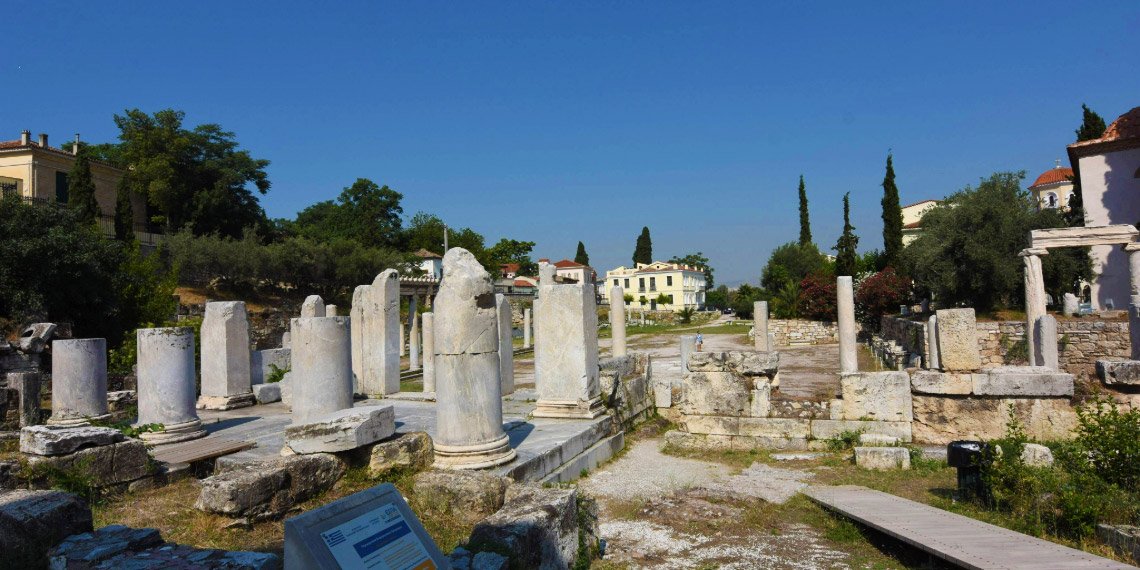Roman Agora: Journey into the Past

The Roman Agora in Athens, Greece, is a significant archaeological site that reflects the city’s historical and architectural evolution from the Hellenistic period through the Roman and Ottoman eras. It was built around 19-11 BC during the reign of Emperor Augustus. It served as a commercial center, replacing the older Agora as the main marketplace of Athens.
I bought my tickets here for the other sites around Athens, and to my surprise, there were no lines at all, unlike the crowded Acropolis. As I wandered through the Roman Agora, I found a spot to rest. I saw a large rock and, thinking it was a bench, I sat down. I was reprimanded by one of the staff. Embarrassed, I quickly apologized and stood up, feeling a bit foolish but also amused by my mistake.
Gate of Athena Archegetis: Unveil the mysteries of the ancients

The Doric gateway on the left, made of Pentelic marble, features four columns and inscriptions dedicating the structure to Athena. It was the grand entrance to the marketplace.
Agoranomion: A window into the past

This building served as the administrative center for the market officials, who managed trade and regulated market activities. It included a tribunal and storage rooms.
The Tower of the Winds

Journey into antiquity
The octagonal tower is often associated with the Roman Agora. It functioned as a water clock, sundial, and weathervane, demonstrating the advanced engineering skills of the time.

East Propylon: Discover the echoes of civilizations past

This secondary entrance on the eastern side of the Agora has Ionic columns and provided access to the market area.
Fethiye Mosque: Explore the footsteps of ancient civilizations

Built in the 17th century during the Ottoman period, this mosque adds a layer of historical diversity to the site. It has been used for various purposes over the years and now stands as a historical monument.
